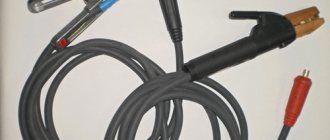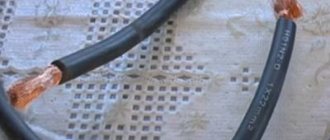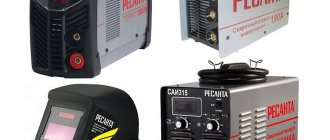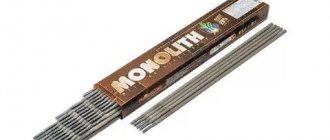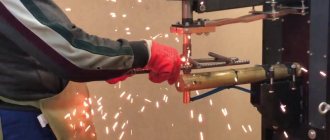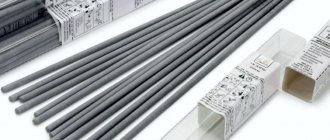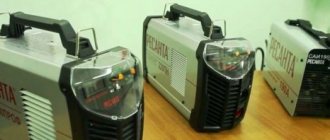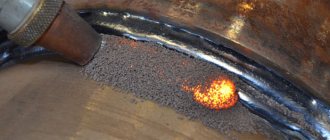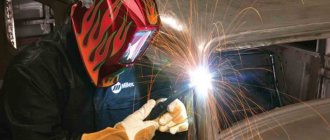Nowadays, welding is needed to connect parts made of different materials, such as metal. There are many varieties of this process because welding is used for many purposes: from household needs to the creation of more complex structures.
The technology itself is not very complicated, if you understand the theory well (types of welding, technologies, basic concepts), then all that remains is to practice creating seams so that they are of high quality, and therefore not only beautiful, but also durable.
So anyone can do this, the main thing is to devote time to self-education.
Types of welding
Different types of welding differ from each other in the way they influence the materials being joined.
- Dugovaya . The most commonly used method due to its simplicity. In arc welding, an electrode is used as a melting tool. With its help, the arc is excited and maintained throughout the welding process. The electrode is selected depending on the grade of metal, and its diameter - on the width of the weld.
- Gas . The heat source in gas welding is the torch. From it, under the influence of strong pressure, a flame emerges, which was formed during the combustion of a mixture consisting of a flammable gas such as acetylene and oxygen.
- Semi-automatic . A mechanical device is used - semi-automatic. The role of the electrode is performed by the wire during its automated feeding. Gas also enters there, the task of which is to protect the molten metal from the aggressive influence of the environment. It is possible to set various modes, which makes it possible to weld multi-pass seams with a semi-automatic machine.
- Automatic . Unlike semi-automation, the entire process is carried out using a welding machine. All you need to do is configure the machine for a specific operation.
- TIG welding . Popular with professionals. I am attracted by its versatility and the ability to weld metal of different thicknesses.
Regardless of what type of welding is used, the correct welding seam will be obtained as a result of compliance with the requirements of the technological process, carrying out preparatory work, and following recommendations.
Types of welds
How to properly make a weld largely depends on its type.
The geometric parameters of the seam include its width, length, depth, and convex size. Beautiful welds can only be obtained with a successful selection of its parameters for each specific case.
Butt welds are produced by the usual connection of metal surfaces or their ends. This process does not require much time. Metal consumption is also minimal. When connected using a T-joint, the result is a structure that looks like an inverted letter “T”.
The advantage of the method is that it can be used to connect elements that have a significant difference in width. Using a boat installation makes the welding process more convenient and reduces the likelihood of defects. Typically such a connection is made in one pass. Corner connections are usually made at right angles, but slight deviations from this value are possible. A stronger connection is obtained when welded on both sides. The overlap method is suitable for thin parts. When one part is placed on another, welding is carried out on both sides.
An important point in how to correctly lay a welding seam is the successful choice of bevel of the edges. There are various options. In addition, it is possible to join without bevel of the edges, for example, using the overlapping method.
M. Gladwell's “10,000 hours” rule
Of course, you won’t succeed in everything right away. Take it calmly. When learning to weld metal, it is recommended to follow the 10,000 hour rule developed by Malcolm Gladwell. To achieve a level of unsurpassed skill, you need to devote that much time to your craft. Yes, for most of us this is very far away. Here are the intermediate steps:
- one thousand hours to master level;
- one hundred hours to the professional level;
- and at least ten hours to master the basics - they look quite realistic!
You are at the very beginning of your journey. Train, study, and with every hour you spend studying, your skills in metal welding will become stronger. Good luck!
Preparation
A significant point in how to make a beautiful seam when welding is the correct implementation of preparatory work. Since the process is accompanied by the appearance of fire, it is necessary to carefully prepare the workplace of the welder performing the work. Provide him with protective clothing and a mask. There should be no flammable objects or materials near the work site.
The product to be welded must be cleaned of dirt, dust, paint stains, grease and oil residues on its surface. In addition to mechanical impact, the use of solvents or alcohol is permissible.
If welding equipment is used, you should first check its functionality. Then select a mode and set the necessary parameters. If the device malfunctions, its operation is strictly prohibited.
What does a novice welder need to get started?
To start training, you will have to select the appropriate equipment and equipment.
Particular attention should be paid to personal protective equipment, since welding work is a process harmful to vision and respiratory organs. If you decide to start training outdoors, be sure to do so on a dry basis and under a canopy that will protect you and the equipment from rain.
If you decide to start training outdoors, be sure to do so on dry ground and under a canopy that will protect you and the equipment from rain.
The workplace should be spacious, not cluttered, and not restrict the welder’s movements.
Cables should be laid out in such a way that they will not be stepped on or tripped over when moving around workpieces.
It is better to choose scraps of rolled stock and steel sheets as blanks for practicing skills. It is not recommended to start with critical structures.
Arc initiation
One of the main points on how to properly weld seams is the proper initiation of the arc. You should choose one of the known methods. The first of them is to hold the electrode in your hand, touch the metal with its tip and quickly move it back to a distance of 2-4 millimeters. Delay threatens the electrode sticking to the metal. The result will be the appearance of an arc. If this does not happen, you should try again.
Another way is to quickly move the electrode along the surface of the metal and immediately lift it a few millimeters. One of the secrets of how to properly apply a welding seam is to maintain a short arc throughout the welding process. This will ensure smooth welding and a high-quality weld with a good appearance. However, if the arc is too short, the process may be interrupted, which will cause a defect in the form of a crater. To continue working, the crater must be welded.
A non-contact method of arc initiation is possible using an oscillator. It serves as an addition to the main welding machine. To initiate an arc, the electrode should be brought closer to the metal surface at a distance of about 5 millimeters. Then you should press the corresponding button on the oscillator and wait for the welding arc to appear.
Tools and equipment
The manual arc welding technique is relatively simple and is performed using specialized equipment and electrodes. You will also need auxiliary tools and protective equipment.
Equipment types
There are three types of machines that can be used to perform arc welding yourself:
- transformers. The operating principle of such devices is based on alternating current. It should be noted that they are quite heavy, can cause sudden changes in voltage in the general electrical network and are very noisy. It is quite difficult to make an even seam on a transformer; only experienced welders can do this. But if novice craftsmen are trained in arc welding using a transformer, then working with other equipment will be much easier;
- rectifiers The operation of the devices is ensured by semiconductor diodes. Units of this type convert alternating current into direct current. These are universal devices. Almost all electrodes are suitable for them and welding can be carried out on different metals. Compared to a transformer, the welding process is much simpler and the arc stability is maintained;
- inverters. They work almost silently. Convenient to use due to its compactness and automatic settings system. During operation, the device produces high-power direct current by converting alternating current.
Among all devices, inverters are considered the best. They create a stable arc even during power surges and are multifunctional.
Tools and equipment
Before welding with electric arc welding, you must first prepare personal protective equipment and tools:
- welding machine and electrodes for it. Those who are just learning welding skills should prepare more electrodes;
- auxiliary tools. The arc welding technique involves removing the slag generated during welding, and for this you will need a hammer and a metal brush;
- protective clothing. You cannot start welding without a special mask, gloves and protective clothing made of dense materials. Such means should not be neglected, since human safety depends on them.
If you are working with the machine for the first time and want to learn how to properly weld using manual arc welding, it is recommended to first prepare training metal elements.
Electrode position
Knowing how to place a weld begins with the ability to choose the desired position of the electrode. Otherwise, a situation may occur in which slagging of the seam occurs, which will not benefit its quality. There are three options for positioning the electrode when welding. The first two assume its inclination in different directions within the same limits, and the third occurs at a right angle.
The “forward angle” method involves moving forward from the welder. It is suitable for welding thin metals in vertical and horizontal positions. With a “backward angle” the movement is towards the welder. Convenient to use over short distances for welding butt and fillet welds. In hard-to-reach places, a 90-degree angle position is used. This is somewhat more complicated, but it solves the issue of welding the ceiling seam.
Electrode movements
An ideal welding seam, or rather an approach to it, is possible with a successful choice of the method of moving the electrode during welding. The most common movements are along the axis of the electrode and along the axis of the seam. But simply moving in a given direction will not bring the desired result. This will create a narrow thread-like seam. It can be used as the first seam in multi-pass welding.
To obtain the desired effect, movements must be oscillatory in nature. This will ensure that the seam is of the required width and ensures good heating of not only the root of the seam, but also its edges.
Trajectories along which oscillatory transverse movement occurs:
- zigzag;
- a loop;
- broken line;
- herringbone or triangles;
- crescent;
- sickle.
All movements are performed transverse to the direction of the weld.
A broken line is used when metal sheets are to be butt welded in the lower position. Crescent is chosen for butt and fillet welds. Before herringbone welding, it is necessary to first deposit a small surface on which it will be held. A simple technique for guiding the electrode in a herringbone pattern is to move it horizontally and then place it a little higher in the middle of the seam.
The crescent motion can be used in TIG welding. In this case, the width of the seam will be large, but it can be controlled during the welding process itself. Transverse movements with a crescent guarantee good welding of the edges of the parts.
The use of a loop provides beautiful connections when welding thin metals. The chain of loops must be continuous. The use of loop-like movements is justified when it is necessary to warm up the edges of the seam well. This is especially important when welding parts made of high-alloy steel. The amplitude of the reciprocating movements is selected depending on the required seam width.
The choice of motion pattern to solve the problem of how to make a beautiful weld depends on its position in space. Seams can be horizontal or vertical. The horizontal seam located at the top is called the ceiling seam. It is the most difficult to perform, since the welder must remain in an uncomfortable position for a long time. A horizontal seam can be performed in two ways - with movements to the left or to the right.
When welding in the vertical direction, the direction of movement of the seam is from bottom to top. Creating a vertical seam is more difficult than a horizontal one, since the molten metal flows down intensively. If you move from top to bottom, then the drops of metal, when solidified, form a solid barrier for the continuation of the seam. Welding a vertical seam should be carried out with a short arc.
Inclusions
Foreign inclusions are cavities inside a weld filled with slag, flux, oxide, or foreign metal.
When slag particles enter a weld seam, a defect called slag inclusions is formed. The welding seam slags when the edges and welding wire are not properly cleaned of contaminants and oxides. Other reasons why a weld seam slags include: welding with a long arc, low current value, or too high a speed of the welding process. If a multi-pass weld is carried out, then slag can get inside if the previous layers are not cleaned.
Slag sections reduce the cross-sectional area of the weld, which leads to a decrease in strength. Flux inclusions occur as a result of the fact that the flux granules did not have time to dissolve in the liquid metal and did not float to its surface. To prevent this situation, it is necessary to use high quality flux and prevent it from inadvertently entering the weld pool. Foreign bodies may enter the weld pool accidentally.
Cooking correctly
Welding metal has many features and difficulties. The main thing when making a seam is not to burn through the metal, but to melt the edges.
Thin metal, the root of the seam of parts with a gap can be welded using the “tear-off” method. The arc is ignited and a weld pool is formed. The electrode rises sharply, the arc goes out, the bath begins to cool and the arc at the end of it lights up again.
Welding of thick metal and surfacing of the weld body is carried out without separation. The arc is ignited and the weld pool is gradually drawn along the seam. If necessary, oscillatory movements are performed.
If the electrode runs out, clean the slag. At the end of the bath, a depression is formed - a crater. A new arc is stirred into the crater of the previous one, and welding continues.
Defecting the seam
After welding, the seam must be cleaned of slag. If the welding is done well, the slag is separated with one blow, easily. A bad seam takes a long time to clean, the slag sticks well to the pores.
What defects you need to pay attention to:
- Edge fusion. Both edges should be evenly fused.
- Undercuts. The edges of parts melt at high current levels, creating depressions. This weakens the metal.
- Shells and slag inclusions.
- Height and width of the roller.
- Scaly roller.
Inverter selection
The correct weld will be obtained by selecting equipment suitable for the specific welding conditions. The welding inverter is a reliable compact device that is easy to use. The characteristics make it possible to generate current of different magnitudes, which makes it possible to weld parts of different thicknesses and different grades of metals. There is an automatic shutdown system in case of power surges, overheating and too long operating time.
One of the important characteristics when choosing an inverter is its power. The operating instructions indicate the period of continuous operation of a particular model. Additional options make working with it more convenient.
Tools and protective equipment
Uniforms and personal protective equipment include:
- welder's mask with a built-in light filter to protect the eyes from bright light and ultraviolet radiation from the arc;
- split-leaf gloves—gaiters to protect hands from splashes of hot metal;
- thick clothing made of non-flammable fabric;
- cap under the mask;
- durable shoes.
- a respirator to protect the respiratory system from generated gases and dust, especially when working with non-ferrous metals.
Tools, materials and equipment you will need:
- Angle grinder (grinder) for cutting workpieces and cleaning seams;
- A set of hand tools - hammers, chisels, pliers, etc.;
- Metal brush for cleaning workpieces;
- Clamps and clamps for connecting workpieces;
- Electrodes.
And finally, the inverter with the included cables and holder.
Possible mistakes
Advice from professionals will help you learn how to get reliable and beautiful welds and how to weld them correctly. The main mistakes that prevent you from obtaining a high-quality seam include:
- Electrode movement too fast. As a result, the seam turns out uneven.
- Excessively low speed of electrode guidance. Burns form, which are a serious defect and are unacceptable in critical structures.
- Incorrect electrode angle . It should be between 30 and 60 degrees. If these values are exceeded, the evenness of the seam is disrupted.
- Welding metals of different grades that have very different characteristics, in particular melting point. When one metal has already melted, and the second has only slightly heated up, welding cannot occur. Cracks appear that need to be repaired.
- Working with wet electrodes. Before welding, they must be dried or even calcined. Humidity causes the arc to burn unevenly.
- Incorrectly selected welding mode, electrode type, current value.
- The arc length is too long or too short.
- Use of welding equipment with an expired verification period.
- Insufficient edge heating. To do this, it is necessary to select transverse oscillatory movements, the scope of which corresponds to the width of the seam.
- A large gap between parts can cause shrinkage cavities.
Beautiful welds cannot be obtained if they have pores. There are many reasons for their appearance in the weld:
- insufficient cleaning of the edges, leaving dirt, rust, and scale on them;
- high moisture content on the edges and electrode;
- presence of drafts in the welding area;
- poor quality electrodes;
- There is a big difference in the chemical composition of the base and filler materials.
Over time, experience comes in how to properly conduct a weld. This is the skill of a welder, whose profession is in demand and prestigious.
Basic Concepts
Welding today is the most reliable metal connection, because it fuses materials into one whole. The procedure takes place under the influence of high temperatures. Most welding machines use an electric arc to operate.
The principle of its operation is as follows: it heats the metal in a certain small zone to the melting point. This type of welding is called electric arc welding.
When forming an electric arc, both direct and alternating current can be used. For alternating voltage, transformers are used, for constant voltage, inverters are used.
The work is easier with inverters, since they operate on a 220 V network. They are small in size and weight, about 4-8 kg. They make almost no noise and do not affect the voltage.
It is much more difficult to work with transformers, since the current is alternating, it affects voltage surges, which neighbors and household appliances are usually not very happy about. The device is large and heavy.
Thus, it becomes obvious that a welding inverter is more suitable for beginners.
